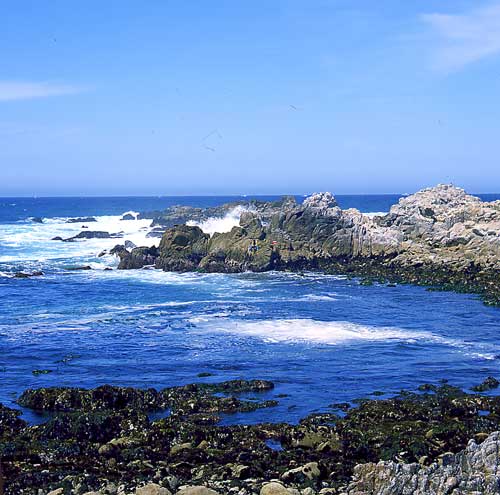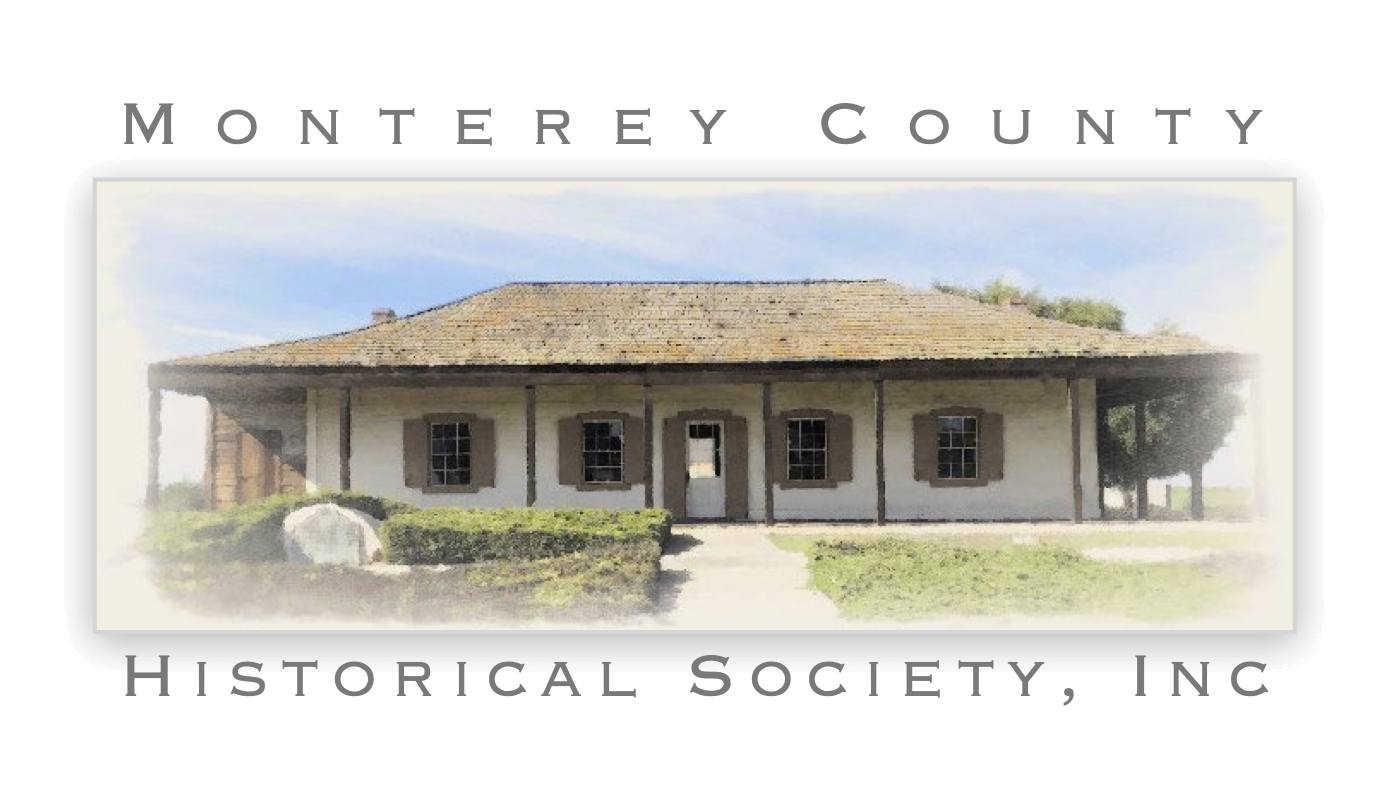ohn Steinbeck incorporated many Monterey County and Monterey Bay area localities into his writing. The following is an initial, but incomplete, list. More to come!
Big Sur–“Flight” (1938) is set along the Big Sur coast below Monterey. In the early 1920s Steinbeck worked for the first surveying crew in the Big Sur area before the U.S. Highway 1 was constructed. Steinbeck’s mother had also taught school in the Big Sur area before marrying his father.
Carmel Valley–In Cannery Row (1945) Mack and the boys drove Lee Chong’s old truck to the Carmel Valley on their famous frog-hunting expedition.
Cominos Hotel–Originally called the Abbott House, this magnificent hotel was constructed in 1873-1874 on the site formerly occupied by the American Hotel (1868) and the Halfway House (1857–the first building in Salinas). The hotel is mentioned in “The Chrysanthemums” and East of Eden (1952). Destroyed by the City of Salinas following the 1989 Loma Prieta earthquake.
Corral de Tierra–Steinbeck set his second book, The Pastures of Heaven (1932), in this valley about twelve miles from Monterey (between Monterey and Salinas). This valley is also described in Steinbeck’s short story “The Murder” (1934) and in “The Red Pony” (1937).
Fremont’s Peak–The highest point in the Gabilan Mountains (elevation 3,169′). Located eleven miles southeast of San Juan Bautista. It can be reached by a scenic winding road, and provides an excellent view of the Salinas Valley. Steinbeck described it in Travels with Charley (1962) and in East of Eden (1952).
The Great Tide Pool–The Great Tide Pool is an area on the tip of the Monterey Peninsula near the whistling buoy off Ocean View Boulevard. Ed Ricketts frequently collected marine specimens here, as mentioned in Cannery Row (1945) and The Log from the Sea of Cortez (1951).

Hollister–Hollister is located in San Benito County between San Jose and Salinas. In 1874 John Adolph Steinbeck, John Steinbeck’s great grandfather, arrived here and opened a flour mill.
Jolon–Jolon is the primary setting for Steinbeck’s early mythical novel, To a God Unknown (1933).
King City–John Steinbeck had strong ties with King City. In 1890 his father settled here, he met his wife, and developed his skills in bookkeeping and in the flour mill business. Steinbeck records the romance of his parents in Travels with Charley (1962) and other family history in East of Eden (1952). King City is also the setting for parts of Of Mice and Men (1937) and To a God Unknown (1933).
Los Gatos–When Steinbeck was working on Of Mice and Men (1937) in the spring of 1936, he and his wife Carol built their first home a mile west of Los Gatos. Here he wrote The Grapes of Wrath (1939). Because the area became increasingly populated and noisy (he complained of the noise in the journal he kept while writing The Grapes of Wrath), Steinbeck sold the house and built another on the old Biddle Ranch property some five miles south of Los Gatos in the Santa Cruz Mountains.
Monterey–In 1944 Steinbeck moved back to California from New York and purchased the Lara Soto adobe, a house he had wanted since boyhood. John Steinbeck and Gwyn, his second wife, lived there only a short time, however, and sold the house a year later. Monterey is the setting for some of Steinbeck’s best writing, including Tortilla Flat (1935), Cannery Row (1945), Sweet Thursday (1954), and mentioned in Travels with Charley (1962), and The Log from the Sea of Cortez (1951).
Pacific Grove–In 1903, Steinbeck’s father built a three room summer cottage on 11th Street in Pacific Grove. Steinbeck lived in this cottage with Carol from 1903-1906, and returned here intermittently in the 1940s. Pacific Grove sites are frequently mentioned in Steinbeck’s fiction including Cannery Row (1945), Tortilla Flat (1935) “The Red Pony” (1937), and Sweet Thursday (1954).
Point Lobos–Located between Monterey Bay and Big Sur on the Pacific Coast, Point Lobos is a National Landmark. Point Lobos served as setting for scenes in Cannery Row (1945), Sweet Thursday (1954), and The Log from the Sea of Cortez (1951). Ed Ricketts collected specimens in caves at Point Lobos. It is a beautiful point that John Steinbeck and his sister Mary especially loved.
Salinas–In 1902, Steinbeck was born in Salinas. He lived here until 1919, when he left to attend Stanford University. Salinas is a central location in many works, particularly East of Eden (1952). See also “The Day the Wolves Ate the Vice-Principal,” “How Edith McGillcuddy Met R. L. S,” (1938) and “The Red Pony” (1937).
San Jose–San Jose is the northern gateway in Steinbeck Country. Both Steinbeck’s mother, Olive Hamilton, and his first wife, Carol Henning, were born in San Jose. San Jose is frequently mentioned in Steinbeck’s fiction.
Soledad–Of Mice and Men (1937) takes place near Soledad. In the 1930s, Steinbeck worked briefly at a Spreckels ranch near Soledad for a time.
Spreckels–Six miles west of Salinas, Spreckels is a company town. In the 1920s and 1930s the Spreckels Company was the largest sugar beet factory in the world. Steinbeck’s father worked as a plant manager at Spreckels for a number of years and was instrumental in getting summer jobs for his son as a handyman and later as a bench chemist. From his Spreckels experience Steinbeck heard stories he included in Tortilla Flat (1935). Parts of the film version of East of Eden and the television presentation of his short story “The Harness” (1938) were filmed at Spreckels.
Watsonville–Located near the Santa Cruz Mountains, may be the setting of Steinbeck’s strike novel, In Dubious Battle (1936).
Sources:
- Much of the information above was obtained from the web site maintained by the San Jose State University Steinbeck Center.
- Monterey County Historical Society, Salinas.


